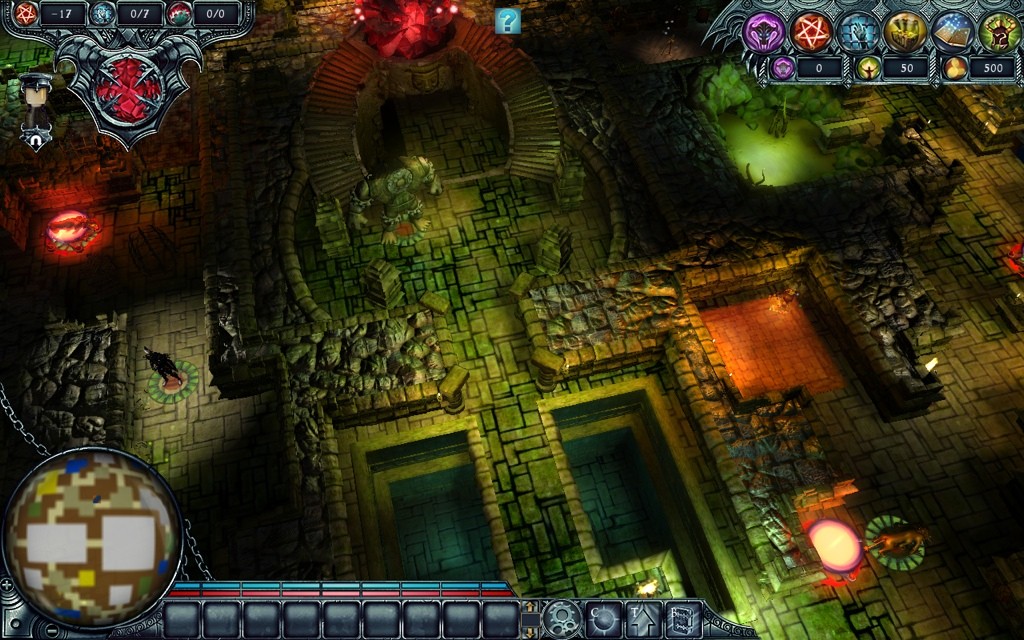Dungeon game PC sets the stage for a captivating journey through the evolution of a genre that has captivated gamers for decades. From the early text-based adventures that sparked the imagination to the immersive, graphically-rich experiences of today, dungeon games have continuously pushed the boundaries of storytelling and gameplay.
This exploration delves into the origins, genres, and key features that define dungeon games on PC, highlighting the impact of technology and the enduring appeal of these immersive worlds.
The Evolution of Dungeon Games on PC
Dungeon games, a staple of the PC gaming landscape, have undergone a remarkable evolution, from humble text-based adventures to immersive graphical experiences. This journey reflects the advancements in technology and the evolving tastes of gamers. The evolution of dungeon games on PC can be traced back to the early days of computing, with text-based adventures paving the way for the immersive graphical experiences we enjoy today.
This journey has been marked by significant advancements in technology and a constant desire to push the boundaries of gameplay.
Early Text-Based Adventures
The origins of dungeon games on PC can be traced back to the early 1970s with text-based adventures. These games, often referred to as "interactive fiction," relied heavily on imagination and text prompts to create a sense of exploration and adventure.
Players navigated through text descriptions of environments, interacting with objects and characters through typed commands. Examples of early text-based adventures include "Colossal Cave Adventure" (1976) and "Zork" (1977), which laid the foundation for the dungeon game genre. These games, while lacking graphics, provided players with a unique sense of immersion through their intricate storylines and challenging puzzles.
The Rise of Graphical Interfaces
The introduction of graphical interfaces in the 1980s revolutionized dungeon games, allowing for more visually engaging experiences. Games like "Wizardry" (1981) and "Might and Magic" (1986) introduced rudimentary graphics, showcasing dungeon environments and characters in a way that was previously impossible.
These early graphical dungeon games offered players a more immersive experience, with visual cues enhancing the sense of exploration and combat. The transition from text-based to graphical interfaces marked a significant leap forward in the evolution of dungeon games.
It allowed for greater detail in environments, characters, and gameplay mechanics, paving the way for the immersive experiences we see today.
Evolving Game Mechanics
Alongside the development of graphical interfaces, dungeon game mechanics evolved significantly. Early games often featured simple turn-based combat systems, where players and enemies took turns attacking. Over time, game developers introduced more complex mechanics, including real-time action, strategic elements, and a wider variety of combat options.
"Diablo" (1996) revolutionized the action RPG genre with its fast-paced combat and loot-driven gameplay. Games like "Baldur's Gate" (1998) and "Planescape: Torment" (1999) introduced deeper storylines, complex character development systems, and intricate tactical combat. The evolution of game mechanics, driven by technological advancements and the desire for greater depth and immersion, continues to shape the dungeon game genre.
The Impact of Technology

Technology has played a pivotal role in the evolution of dungeon games on PC. Advancements in graphics processing, sound technology, and game engines have enabled developers to create increasingly realistic and immersive experiences. The introduction of 3D graphics in the 1990s allowed for more detailed environments and character models, further enhancing the sense of immersion.
Dungeon games on PC often require a powerful system to handle complex environments and numerous enemies. For those who prefer a more direct approach, consider building a game PC tank specifically designed for high-performance gaming. This type of build will not only excel in dungeon games but also handle any demanding title you throw at it.
Games like "The Elder Scrolls V: Skyrim" (2011) and "Witcher 3: Wild Hunt" (2015) showcased the power of modern technology, with breathtaking graphics, immersive sound design, and expansive open worlds. The continuous development of technology continues to push the boundaries of what is possible in dungeon game development.
While dungeon games on PC often focus on exploration and combat, a different kind of challenge awaits in the world of rhythm-based platformers like geometry dash game pc. This game requires lightning-fast reflexes and precise timing, making it a unique and addictive experience.
Just like mastering a dungeon, conquering the levels in Geometry Dash demands patience, skill, and a dash of creativity.
Popular Dungeon Game Genres: Dungeon Game Pc
The dungeon game genre has spawned a variety of subgenres, each with its own unique characteristics and appeal. These subgenres cater to diverse player preferences, offering a wide range of experiences within the overarching framework of dungeon exploration and combat.
Action RPGs
Action RPGs are characterized by their fast-paced combat, emphasis on player skill, and often include elements of hack and slash gameplay. These games prioritize action over strategy, encouraging players to engage in dynamic and often chaotic battles. Examples of popular action RPGs include "Diablo" series, "Torchlight" series, and "Path of Exile." These games offer a blend of action, exploration, and loot acquisition, with a focus on rewarding players for their skill and reflexes.
Turn-Based RPGs

Turn-based RPGs emphasize strategic planning and tactical combat. Players take turns with their enemies, making decisions that can have a significant impact on the outcome of battles. These games often require players to carefully consider their actions, utilizing a variety of skills, spells, and items to outmaneuver their opponents.
Examples of popular turn-based RPGs include "Divinity: Original Sin 2," "Wasteland 3," and "The Banner Saga." These games offer a more methodical approach to combat, rewarding players for their strategic thinking and ability to adapt to different situations.
Roguelikes
Roguelikes are characterized by their procedurally generated environments, permadeath, and emphasis on challenging gameplay. Each playthrough of a roguelike is unique, with dungeons, enemies, and loot randomly generated. The permadeath mechanic adds a layer of risk and tension, as a single mistake can result in the loss of all progress.
Examples of popular roguelikes include "Hades," "Slay the Spire," and "Binding of Isaac." These games offer a high level of replayability, with each run presenting a new set of challenges and opportunities. Roguelikes appeal to players who enjoy a sense of discovery, challenge, and the thrill of overcoming difficult odds.
MMORPGs
MMORPGs (Massively Multiplayer Online Role-Playing Games) are online games that allow thousands of players to interact in a shared persistent world. They often feature large-scale dungeons, raids, and social interactions, fostering a sense of community and shared adventure. Examples of popular MMORPGs include "World of Warcraft," "Final Fantasy XIV," and "Elder Scrolls Online." These games offer a unique blend of exploration, combat, and social interaction, allowing players to connect with others and experience a shared world.
Key Features of Dungeon Games
Dungeon games share a set of core mechanics that define their gameplay and appeal. These mechanics, while varying in their implementation across different genres and games, form the foundation of the dungeon game experience.
Character Creation
Character creation is a crucial aspect of most dungeon games, allowing players to personalize their avatars and define their role within the game world. Players typically choose from a variety of classes, each with its own unique skills, abilities, and strengths.
These classes often represent different archetypes, such as warriors, mages, rogues, and healers, each offering a distinct playstyle. Character creation systems also allow players to customize their characters further, choosing from a variety of attributes, skills, and talents.
This customization provides players with a sense of agency, allowing them to build characters that align with their preferences and playstyles.
Exploration
Exploration is a central pillar of dungeon games, driving players to uncover hidden secrets, encounter new challenges, and discover the vastness of the game world. Players navigate through dungeons, caves, forests, and other environments, uncovering hidden pathways, solving puzzles, and encountering both allies and enemies.
The exploration process is often driven by curiosity, a desire to uncover the unknown, and the thrill of discovering new areas and rewards. Dungeon games often feature intricate and well-designed environments that encourage exploration, rewarding players for their curiosity and persistence.
Dungeon games on PC offer a unique blend of strategy, exploration, and combat. While you navigate treacherous labyrinths and battle fearsome creatures, you might find yourself craving a different kind of challenge. If you're looking for a fast-paced, team-based experience, consider checking out the latest NFL game for PC.
This will provide a refreshing change of pace from the intricate world of dungeon games, offering a chance to test your skills on the virtual gridiron.
Combat
Combat is an integral part of the dungeon game experience, providing players with opportunities to test their skills, overcome challenges, and progress through the game. Dungeon games offer a variety of combat systems, ranging from simple turn-based encounters to complex real-time action battles.
Combat systems often incorporate different attack types, special abilities, and enemy AI, providing players with a variety of options and strategies to choose from. The design of combat systems is crucial to creating a balanced and engaging experience, ensuring that players are challenged but not overwhelmed.
Loot and Progression, Dungeon game pc
Loot and progression systems are fundamental to the dungeon game experience, providing players with a sense of accomplishment and encouraging them to continue exploring and challenging themselves. As players progress through the game, they collect items, equipment, and resources that enhance their characters' abilities and stats.
While dungeon games offer a more immersive and strategic experience, sometimes you crave the adrenaline rush of a fast-paced fighting game. If that's the case, you might want to check out game pc mortal kombat , where you can unleash devastating combos and finishers.
But if you prefer a more methodical approach, dungeon games offer a unique challenge and reward, requiring careful planning and resource management to overcome each obstacle.
These items can range from simple weapons and armor to powerful artifacts and magical items, each offering unique benefits and advantages. The acquisition of loot and the subsequent progression of characters provide a sense of reward and achievement, motivating players to continue their journey.
Outcome Summary
The world of dungeon games on PC continues to evolve, offering an array of experiences that cater to diverse tastes and preferences. Whether you crave fast-paced action, strategic depth, or the thrill of exploration, there's a dungeon game out there waiting to be discovered.
As technology advances and new ideas emerge, the future of dungeon games promises even more exciting possibilities, pushing the boundaries of what's possible in interactive entertainment.



